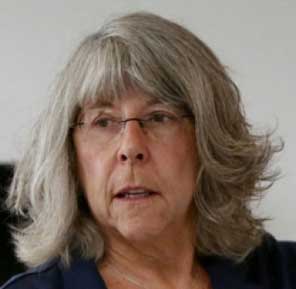by Jan Breiner Frazier, Planning Plus, LLC
Beginning last March, in a corporate response to the pandemic, the move to working from home became the go-to solution for continuing to operate. Yet, it has been a two-sided coin. On the plus slide, no longer do we need to jump out of bed, hit the shower, feed the kids and rush out the door to what could be a lengthy commute. In the midst of the pandemic, the running joke became we only had to look presentable from the waist up, often hiding pajama bottoms and slippers under our laptops. Kids, dogs, cats and other interruptions became accepted and, often times, were met with humor. Zoom meetings and conferences have become the norm, although many are still having a hard time finding the mute button.
Some managers have cited increased productivity without all the diversions of having multiple bodies in the office. Although email still constantly pings, many of us can now focus and concentrate without the usual interruptions of “Hey, you gotta minute?” Of course, the most significant benefit — and the driving purpose of staying home — is to reduce the spread of the coronavirus by eliminating physical interactions within less than 6 feet. Most employees today do not have private offices, and the shift many made to taking down walls and sharing open spaces may have to shift back.
The projects we primarily engage in with our clients — strategic planning, board development, leadership development — is best done in an interactive setting, where we can share information in large group settings, moving to smaller groups to tackle specific challenges. We have been able to adapt this work via Zoom, and my partners have become quite adept at screen sharing and whisking attendees into “Zoom rooms.” But we have missed the ability to get to know the participants, engage with them on a one-to-one level, and have a bit of fun. Last month, I had the opportunity to speak to a group in person. I was in heaven.
At the same time, we have noticed that even within our small firm, the lack of face-to-face interactions on a consistent basis has caused a few communication breakdowns. While we are focused on our own projects and our own clients, we have lost the team time to be able to think bigger than the project at hand, play with some “what ifs” or come up with new theories or methodologies. And then we thought, If it’s happening to us, how are other companies handling this? So, we started asking our clients about their company culture: What impact has working from home had on your culture? For the most part, the feedback has been less than positive.
We know that when individuals are faced with change that they perceive as negative, they travel through a cycle of emotions, beginning with denial and anger, moving through depression and perhaps resistance, and then — with encouragement — celebrating a new beginning. When we discuss organizational change, our advice to managers is to stay close to those employees who are struggling with change and accepting the new landscape and their role in it. But without personal interaction, how do managers really know where their employees are until productivity slips, mistakes happen, or deadlines are missed? And who is not going through change?
It turns out that the “water cooler” conversations we thought were such time wasters were not; it was a place for folks to come together to share stories, snicker at Tiger King (we know Carole threw her husband to the lions), complain about family dynamics at holidays, and wonder what in the world our managers were thinking when they made THAT decision. But it was a way to connect.
What to do? There are many employees who have embraced working from home and don’t want to go back into the office, for many reasons. But there are also employees who just want to get back to seeing their colleagues in person, work in a professional atmosphere (rather than the kitchen table) and get out of the house! For the sake of your culture, you must strike a balance.
As we discussed this challenge with our clients, we have shared the following advice:
- Assuming you can do so safely (and we have learned a lot since last March), develop at least a hybrid situation where full teams can come into the office for one or two days a week. Begin with a short “How is everyone doing?” exchange to start to redevelop their personal interactions that existed pre-2020 and then delve into the agenda.
- Keep Zoom or other electronic meetings to 90 minutes. Research is coming out that sitting and passively watching a screen for long periods of time are hard on both the eyes and the brain. Additionally, we know that often in these meetings one set of eyes is on the screen and the other set is on another device checking emails and texts.
- Come up with creative ways to keep the team together. We know of organizations that have played games over Zoom, had trivia challenges, or even had contests about who could create the funniest screen saver (our client Quality Mill Supply had a great time with this to break up Zoom strategic planning).
- Create a “culture” team that can come up with ideas to continue those interpersonal relationships. One of our long-standing clients, Langham Logistics, has had a Culture Committee for years to plan activities and events for employees. This type of attention to employees is more important than ever.
Of course, we know that not all employees are working from home, and our clients in health care and other human social services have had to continue to be in person and on-the-job for the duration of this time, and the stress is tremendous. They need extra attention during these times as well. While time is precious, and there is a lot to do, keeping your culture intact should be Job One.

Jan Breiner Frazier, the managing member of Planning Plus, LLC, has been a consulting professional since 1988. She has designed and facilitated strategic, annual, and operational planning sessions for a multitude of organizations. Her work with non-profit boards and associations has included strategic planning, board development, and committee structure.


